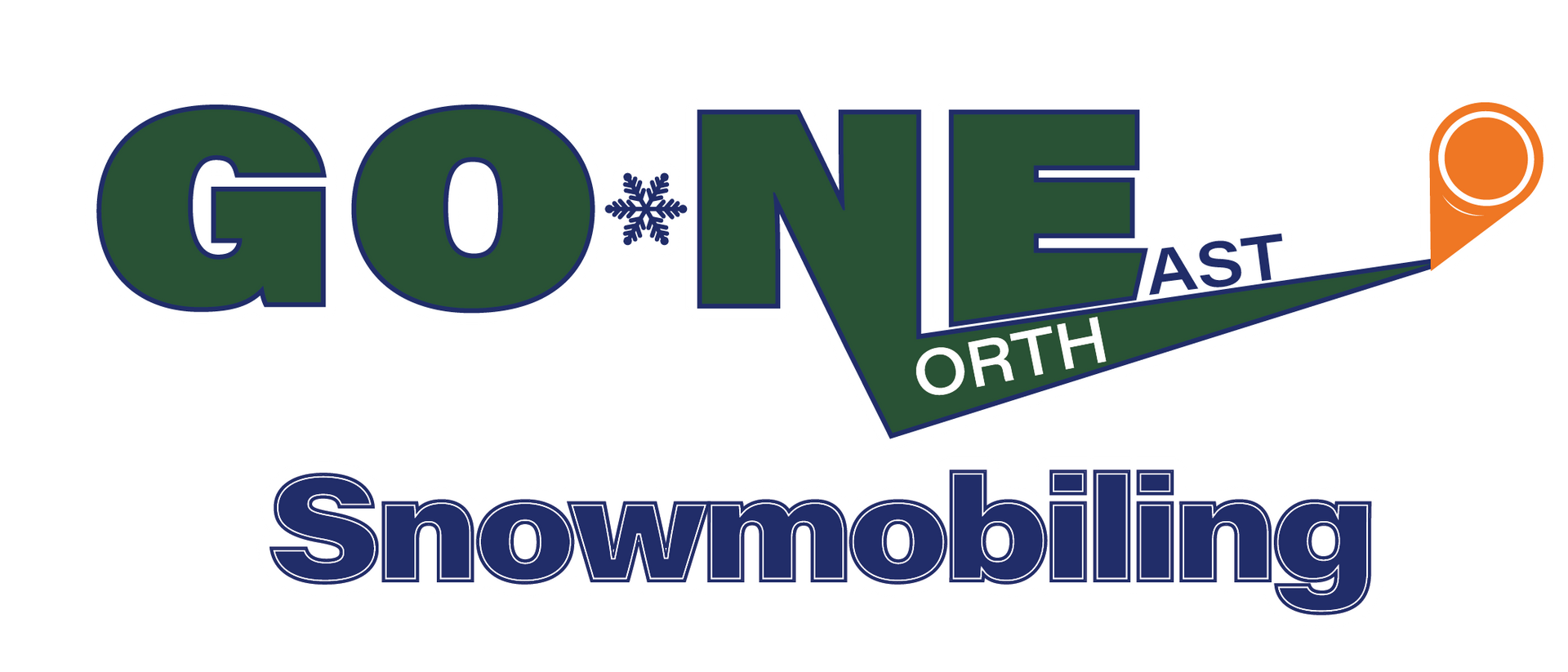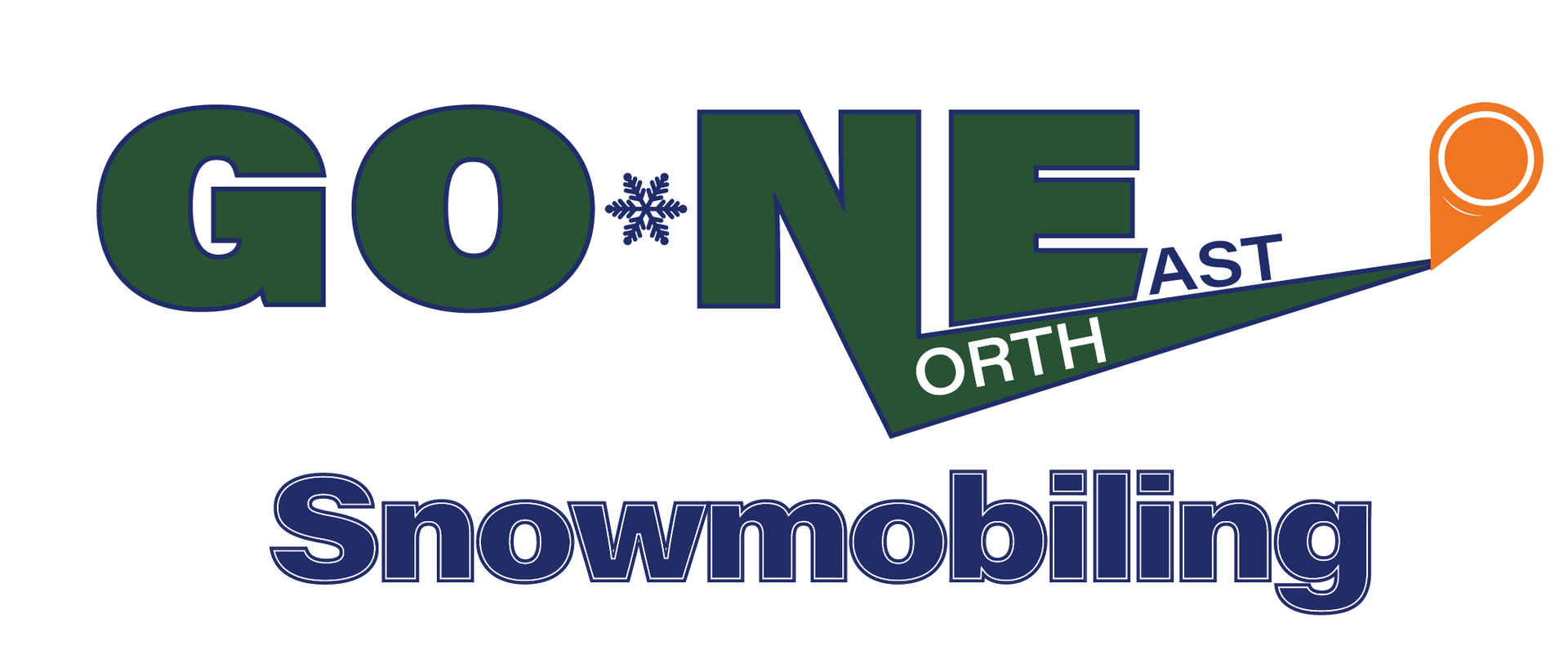Why Hydration Matters - The Importance of Staying Hydrated While Snowmobiling
April 8, 2024
Why Hydration Matters - The Importance of Staying Hydrated While Snowmobiling
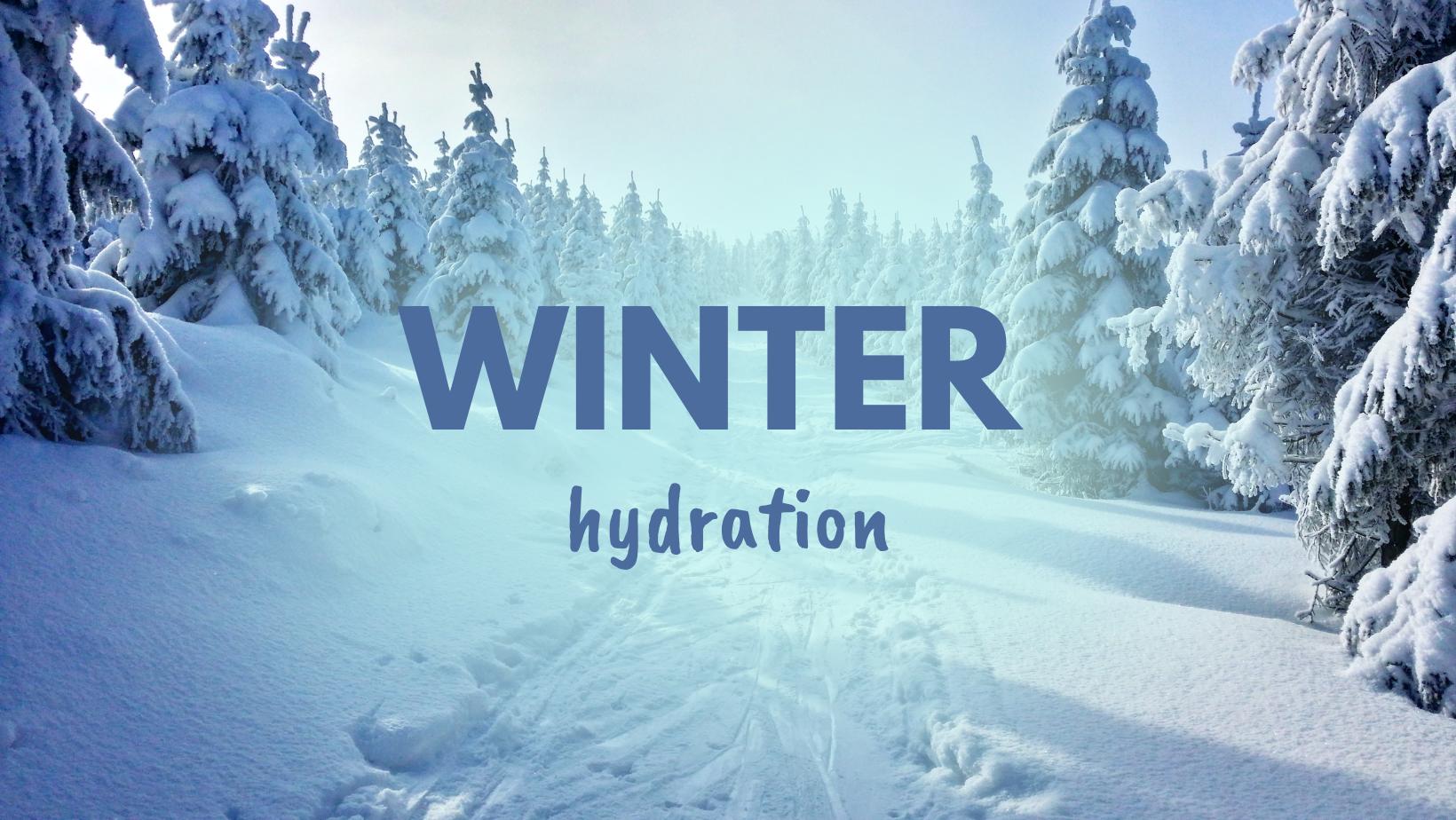
Staying well-hydrated is essential for well-being and feeling alert and energetic on the trails. Keeping your body hydrated in any climate or temperature can be challenging, but when temperatures decrease, we may not feel as thirsty, which can often lead to dehydration. Dehydration occurs when the body lacks sufficient fluids to function correctly and maintain high energy levels. Regardless of outside temperatures, staying hydrated throughout the year is crucial.
The body's response to cold weather and why staying hydrated is essential:
When the body sweats, urinates, or defecates, it results in water loss. Recognizing sweating in colder weather can be challenging, so remaining aware is vital while bundled up in your snowmobile gear. Even if you typically don't sweat, water loss through the skin can still occur, and dry indoor heating can lead to dehydration without you noticing. Dry air can increase a human's breathing rate, along with the loss of humidity, resulting in respiratory water loss. Higher altitudes can also magnify these losses. Insufficient water intake not only leads to dehydration but also amplifies the risk of health issues such as kidney stones, urinary tract infections, and constipation.
Up to 70% of the human body is water, which regulates everyday bodily functions. Water is essential for transporting nutrients, eliminating waste, supporting the immune system, hydrating tissues and organs, maintaining blood pressure, and regulating body temperature, crucial for preventing hypothermia during winter outdoor activities.
Signs of dehydration:
The first and obvious sign of dehydration is feeling thirsty. Other indicators include dark-colored urine, constipation, dry mouth, chapped lips and skin, headaches, difficulty concentrating, irritability, dizziness, and a rapid heart rate. Infants and older people are particularly vulnerable to dehydration. Seeking immediate medical attention is necessary if you experience decreased urine output, a fever between 101-103°F, or diarrhea lasting more than two days, as these are signs of severe dehydration.
How much water is sufficient?
Determining necessary water intake depends on the individual. Various factors should be considered, such as age, sex, activity level, altitude, weather, and overall health. A primary method to calculate minimum fluid requirements is to halve one's weight in pounds; for example, a person weighing 150 pounds should aim for at least 75 fluid ounces daily. To simplify, most men should maintain a regular intake of about 15 cups per day, and women should try and maintain an intake of around 11 cups per day. More is required for recreational and outdoor activities. While most people can maintain proper hydration with sufficient daily water intake, those experiencing heavy sweating, prolonged exercise, or significant fluid loss from fever may require sports drinks
or electrolyte replenishment. Electrolytes and extra sodium are essential in staying hydrated when participating in more rigorous activities such as snowmobiling.
The relief factor:
At times, it can be inconvenient when nature calls while riding. If you are an avid snowmobiler, you already know this. It seems counterintuitive to work on staying hydrated when you need to keep using the woods as a pit stop. Below are some recommended tips on hydrating before and after you hit the trails so that trailside stops may be less frequent. It’s good practice to be mindful and respectful of fellow riders by jumping off the trail if you cannot make it to a public facility. Female nature enthusiasts find funnel devices
easy and convenient for unplanned pitstops. There are various brands on the market today from which to choose.
Hydrating tips:
- Start hydrating for several days before riding; at least 2 or 3 liters daily for a week. The "camel-ing up" method preps the body and helps hydrate your organs and veins.
- Continue water intake before and especially after each ride.
- Warm fluids like herbal teas or broths should be considered if plain water is unappealing.
- Flavor plain water with lemon and lime. Other fruits and unsweetened flavor packs are also good options.
- Electrolyte packets and beverages, such as coconut water, can be added to plain water or purchased for individual consumption.
- Sip from a portable water bottle throughout the day to encourage hydration.
- Water-rich foods can amplify hydration. Suggestions include leafy green vegetables, citrus fruits, melons, tomatoes, cucumbers, and homemade soups.
- Limit caffeine intake. Too much caffeine can contribute to dehydration. To prevent dehydration, consume an equal volume of water per caffeinated drink.
- Alcoholic beverages can quickly lead to dehydration and the risk of hypothermia. Try replacing alcohol with mocktails while stopping food/drink along the trail system. Ride responsibly! It's never a good idea to consume alcohol and operate a snowmobile.
- Establish a hydration routine, starting with a glass of water by your bedside and aiming to drink a certain amount throughout the day.
Implementing these strategies and prioritizing water intake can help you maintain hydration and overall health during winter.
Sign Up for Our Newsletter!
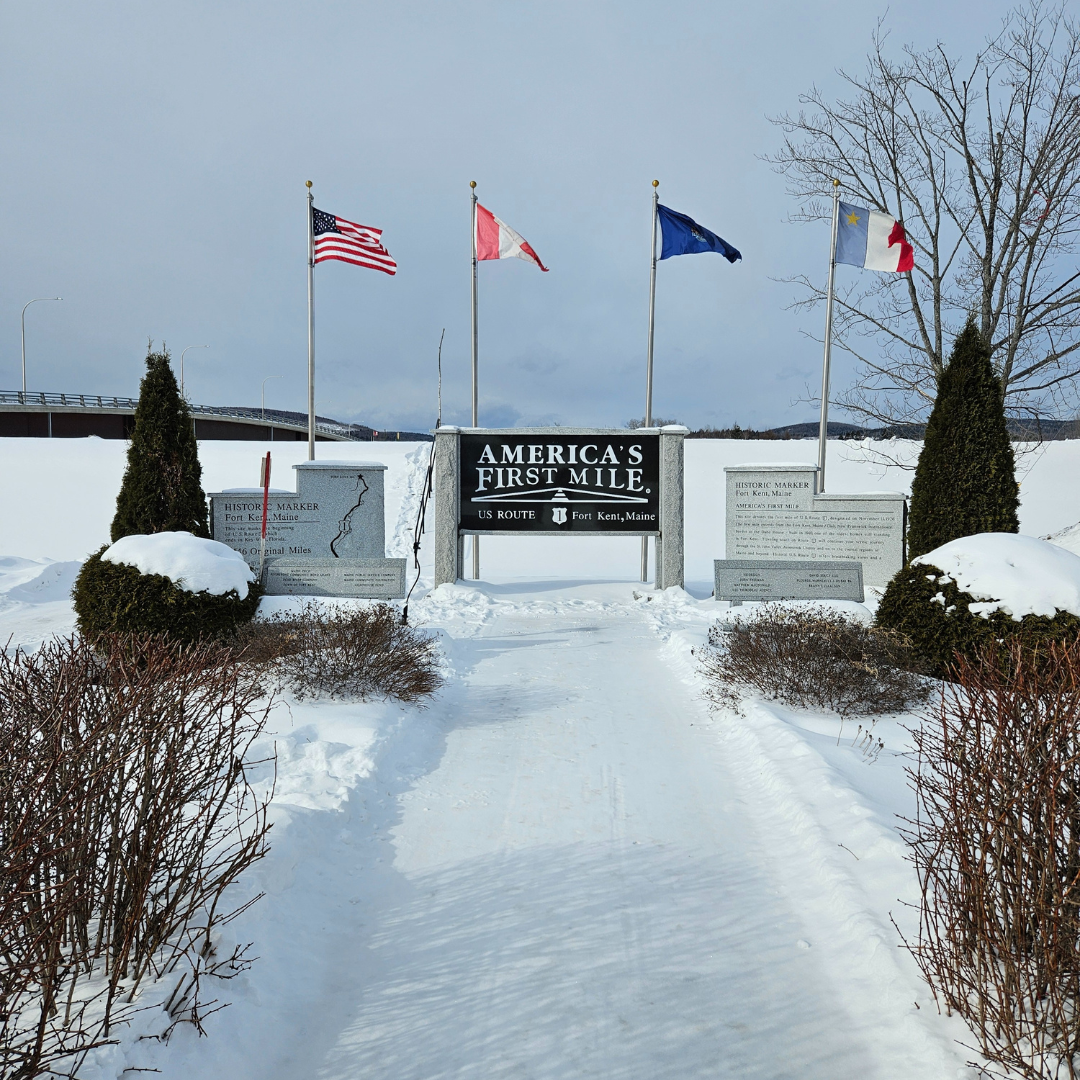
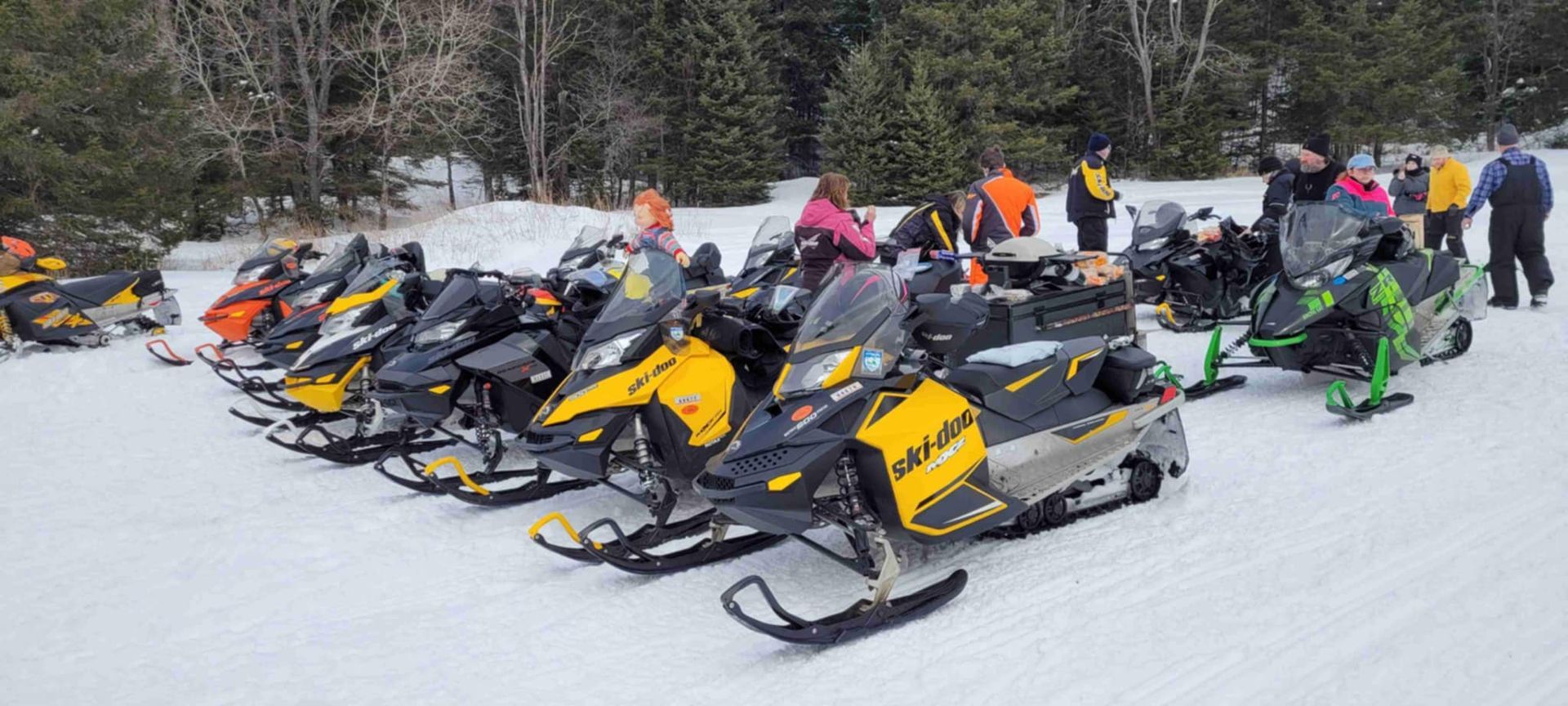
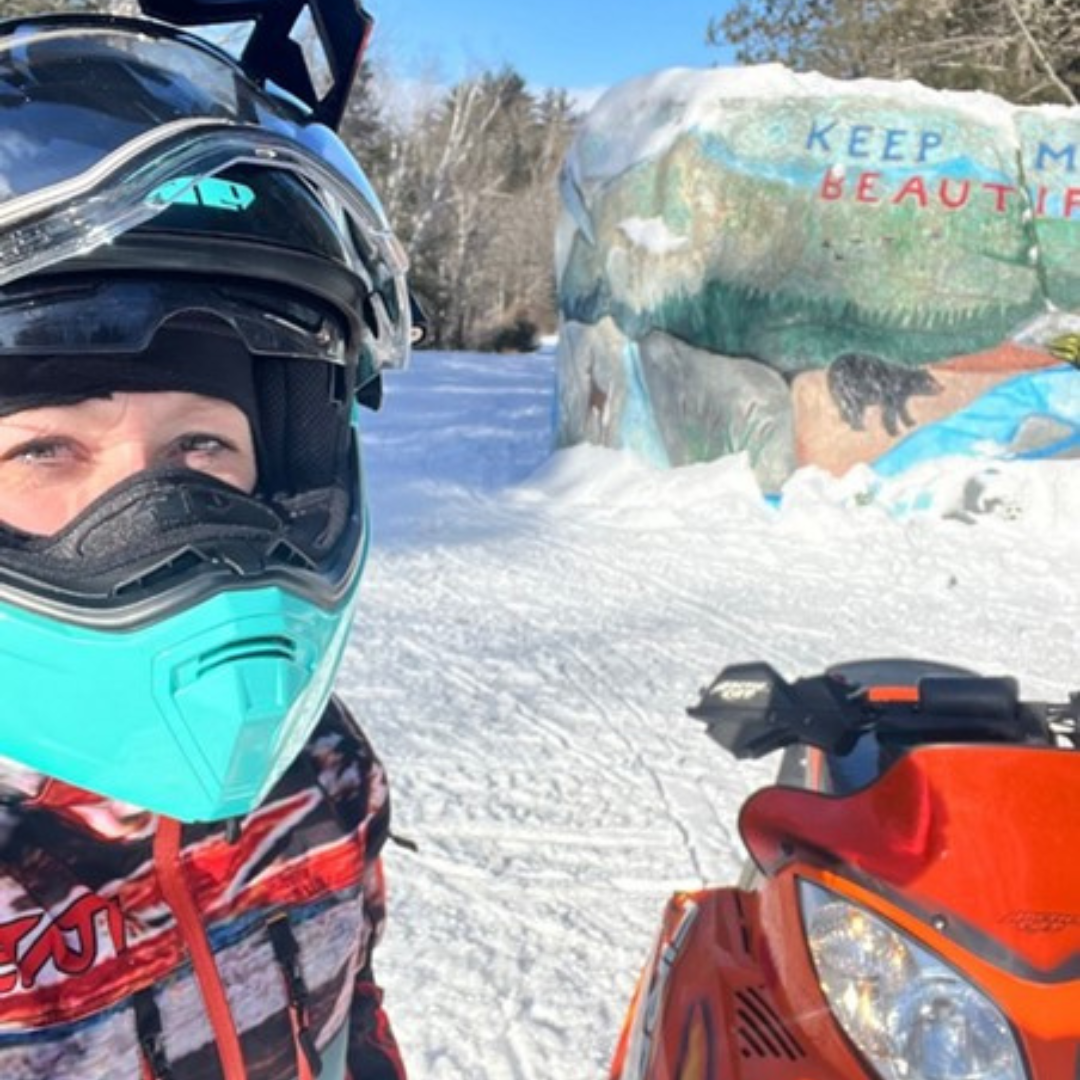 More Posts
More Posts
Go Northeast Snowmobiling Blog

If you're planning a snowmobile getaway and are undecided about where to go, Fort Kent, in Aroostook County, Maine, (located in St. John Valley) will not disappoint. Located on the Canadian border in northern Maine, Fort Kent offers an extensive trail system, along with numerous nearby amenities. The Fort Kent Sno Riders is the local snowmobile club that oversees hundreds of miles of the trail system in and around Fort Kent. https://www.fortkentsnoriders.com/ Trail maps are available at the Fort Kent Chamber of Commerce, 112 W Main St, Suite 1, in Fort Kent. https://fortkentchamber.com/ America's First Mile GPS Coordinates 47.2487° N, 68.6022° W A granite monument that marks the beginning of US Route 1, a 2,369-mile highway stretching from Fort Kent, Maine, to Key West, Florida, making it the longest north-south road in the United States. Photo op: Photos are welcome in front of the monument; however, only foot traffic is allowed—no sleds are permitted on monument property. Rock's Diner Conveniently located across the street from America's First Mile, this diner "rocks" with delicious food at affordable prices. Owner Tracy Carons' hospitality is top-notch, and she loves seeing riders stop in, enjoy a home-cooked meal, and warm up before getting back out on the trails. Riding tip: There is ample sled parking in the parking lot out back, as well as a back door for entry and exit. https://www.facebook.com/rocksdiner/ 207-834-2888 Junction 19 Vacation Home Seeking a cozy, but spacious location to relax after a long day of riding? The J19 Vacation Home is a perfect choice. A beautiful trailside home that provides all the modern amenities, including a fully equipped kitchen, washer & dryer, and a hot tub. There is plenty of space for two couples and ample parking for trucks and trailers. Bonus: The perfect wilderness feel while still being close to town. https://junction19co.com/vacation-home / 207-436-0067 Camel Brook Camps Considered a snowmobiler's paradise, Camel Brook is an ideal location for those who prefer a cabin lifestyle. Traveling with a crew, no problem. There is plenty of parking room with trail access right from the property. Park your sled right outside your cabin each night with peace of mind. Travel tip: Hang up your gear conveniently after a long day of riding. There's plenty of space. https://www.camelbrookcamps.com/ 207-316-8324 Can-Am Crown International Sled Dog Races – February 28th, 2026 This event is a Fort Kent tradition, and what better way to attend than on your sled? The race route follows the Heritage Trail, where snowmobilers can pull off the rail trail to view the races. If you are traveling along the trail during race hours, it is suggested that you slow down, watch out for the race teams, and turn off your engine when possible, out of respect for the mushers and their dogs. Tip: Best viewing times are on Saturday between 8:00 a.m. and 11:30 a.m. https://can-am-crown.net/about/about-the-race.php

A Small Town in the Northeast The small town of Frosthaven is nestled in a valley surrounded by towering pines and snow-capped peaks. Winters are long, cold, and breathtakingly beautiful. For decades, snowmobiling had been a cherished tradition, a way to traverse the vast, snow-blanketed wilderness. However, no snowmobile clubs existed in this version of Frosthaven’s history. It wasn’t that snowmobiles didn’t exist—locals and tourists still used them. But without clubs to organize trails, advocate for rights, or foster camaraderie, the sport was an entirely different experience. Chaos on the Trails Bob strapped his helmet and prepared to ride his snowmobile through Pinetree Pass. He loved the ride's thrill, the engine's roar, and the quiet that followed when he stopped to take in the view. Yet, every trip was fraught with uncertainty. Without designated trails maintained by clubs, riders forged their own paths. Some riders crossed private property, angering landowners. Others ventured into environmentally sensitive areas, damaging the ecosystem. Bob had heard horror stories of snowmobilers getting lost in treacherous terrain without clear signage to guide them. As he revved his engine, he worried about another issue: the rivalry between riders. Snowmobiling had become competitive and territorial without a club to mediate disputes or encourage a sense of community. He had recently been shouted at for "stealing" a trail someone claimed as their own, even though it was just an open stretch of forest. “I wish there were some rules and regulations around here,” he muttered as he sped off into the wilderness with doubt and uncertainty. A Fading Tradition Miles away, Tim sat on his porch, gazing wistfully at the untouched snow draping the fields. He was in his seventies now, and his body didn’t allow him to ride like he used to. In his youth, he’d gather with friends after a day on the trails, warming up with a hot “adult” beverage at the local lodge and swapping stories of their adventures. Now, snowmobiling felt lonely. There were no clubs to organize meetups, no charity rides to unite the community, and no lodge gatherings to share tales of near misses and scenic views. The sport had become individualistic, with riders often going solo or sticking to tight-knit friend groups. Tim sighed. “Kids these days don’t know what they’re missing,” he told himself. A Community Fractured The lack of clubs also meant a lack of advocacy. When a proposed law threatened to ban snowmobiling near Frosthaven’s largest lake, there was no unified group to push back. Riders tried to fight it independently, but without organization, their voices were drowned out by environmental lobbyists. “It’s not fair,” Bob said at a town hall meeting. “We’re not all reckless! Most of us respect the land and follow the rules.” “But who enforces those rules?” a council member asked. “Snowmobiling has become too chaotic. Without proper oversight, it’s harming Frosthaven’s environment and reputation.” The council voted to restrict snowmobile access to large parts of the region. Riders were devastated. A Vision for the Future Bob couldn’t stop thinking about how fragmented the snowmobiling community had become. What if things could change? One evening, he sat with Tim, listening to his stories of the “golden days.” “Why don’t we start a group?” he asked. Tim raised an eyebrow. “A club?” “Exactly! We could map out trails, work with the town council, and even host events. It might take time, but it could bring people together, and get the youth more involved since we old-timers are aging out.” Tim’s face lit up. “I like the sound of that. It won’t be easy, though. You’ll need to rally the riders, convince the landowners, and build trust with the council.” “I’m ready to try,” Bob said with determination. The First Frosthaven Snowmobile Club Bob’s idea sparked something in the town. Slowly, he and Tim gathered supporters. They hosted meetings in Bob’s barn, inviting anyone with a snowmobile and a passion for the sport. They reached out to landowners, promising to create and enforce responsible trails. After a year of effort, the Frosthaven Snowmobile Club was born. The club organized trail cleanups, negotiated access to private land, and marked safe routes through the mountains. It even planned the town’s first snowmobile rally, bringing riders together for fun and camaraderie. Snowmobiling in Frosthaven was transformed. What had once been chaotic and isolating became a vibrant, united community. The club preserved the sport, involved the youth, and fostered a sense of belonging and purpose. Moral of the Story Snowmobiling would still exist without snowmobile clubs and associations, but it would lack the structure, safety, and sense of community that makes it so viable and special.

Introduction: If you asked Amanda Page what her true passions are, she would probably say family, friends, her dog Brock, her two horses, trucks, and a long list of outdoor activities. When I first met Amanda, a Registered Maine Guide, I could tell almost immediately that she was passionate about life. She is very kind, has a great sense of humor, and is personable and genuine. Before we even hit the trail on our hike up Haystack Mountain in Liberty, Maine, I felt very comfortable with Amanda, as if I had known her for a long time. I was doubly impressed with how prepared she was for our impending hike. Even though it was a shorter hike than most, she was outfitted with everything necessary in case we encountered any issues. She was very knowledgeable about the area, and when the walking path suddenly veered in a different direction than what she remembered, she knew which turn to make. Her confidence made me feel at ease. Haystack Mountain Hike & Shop Talk: It was a gorgeous day on top of Haystack. It was breezy and clear, and the temperature was in the 70s with blue skies. We dropped our backpacks and took in the panoramic view of Waldo County. We took pictures and video clips and naturally talked about snowmobiling. Amanda is an avid snowmobiler and is familiar with the Maine Highlands region. She frequently trailers north to the Shin Pond —Mt. Chase area and also enjoys riding out of Medway and East Millinocket/Millinocket. She explained that when she’s not in Shin Pond, she typically leaves from East Branch Snow Rovers Club in Medway as it is closer to home, but going from the large parking lot across the road from Northern Timber Cruisers is an excellent option for those who would like to cut off a few extra miles on the sleds and be closer to the Baxter Park loop and New England Outdoor Center , a.k.a. NEOC. When the snow is optimal during the winter, she always enjoys a great trail ride. She also loves catching views of Mount Katahdin, which she hikes from springtime through fall. In fact, Katahdin is one of her go-to hikes when guiding clients. Matagamon Wilderness is a favorite stop in the region for great food, fuel, and hospitality. She loves their baked goods, delicious burgers, and homemade bread, which she thinks adds a special touch. Amanda's new venture: I enjoyed learning about one of Amanda's new ventures, off-trail snowmobile riding. Her first off-trail riding experience was in the winter of 2022/23, held at Dean's Den in New Canada, Maine. This establishment has a great facility, and the people who own it are top-notch. They will connect you with a guide and rentals if needed during your stay. She snagged a spot at an all-woman clinic held by Let 'Er Rip LLC , hosted by the lodge. The entire group ate meals there, packed lunches for the trail, and had a great time. She plans on going back every year for Ladies Clinic weekend! The most important advice she can offer when taking part in off-trail riding is to hire a knowledgeable guide and have written permission from the landowners to access any land you'll be riding on, including the parking location and trailhead. Hick Chick Maine Adventures - Services/Website/Social Media: Amanda currently offers many outdoor adventures and will soon add snowmobile-guided tours. One of her goals for the 2024/25 sled season is to lead a three to four-day backpacking loop trip where riders carry their clothes on their backs to different locations throughout Northern Maine. Stay tuned! Her website has lots of information and exciting blog posts about her favorite locations and adventures. In her own words, "I believe you must bring your whole self to the table if you want to thrive in today's crazy world: your personality, your sense of humor, and most importantly, your heart. All of these elements brought me to found Hick Chick Maine Adventures. I invite you to explore my site, learn about my passions, and explore what excites and interests you". Final thoughts: In conclusion, I feel lucky to have met Amanda. I look forward to recommending her services, as she is an excellent choice for any Maine-guided hiking or snowmobile adventure! Website: https://www.hcmaineadventures.com/ Facebook : https://www.facebook.com/hick.chick.me/ Instagram: https://www.instagram.com/hick.chick.me/
